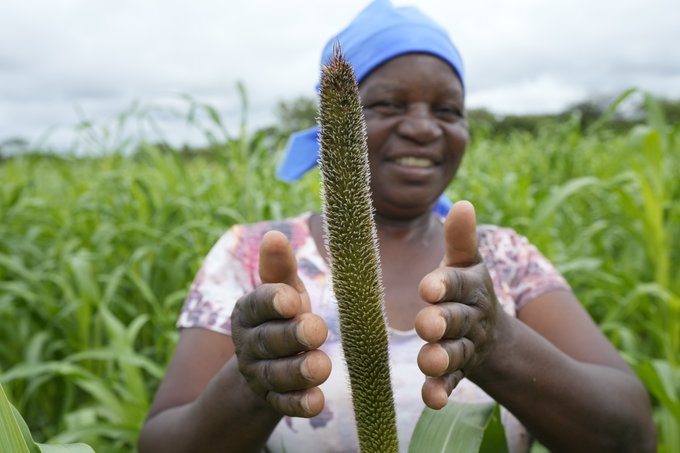There is currently a major drought in Zimbabwe. Its impact is somewhat not as felt in the urban as it would be in the rural areas of the country.
In the urban areas it is more or less about the depth of boreholes and the setting up of support committees to deal with water shortages due to the inability of urban councils to deliver everyday use of water for reasons that vary from general incompetency through to actual water and attendant water-treatment chemicals shortages.
It however rarely appears to be immediate given the fact that those in urban lifestyles have no immediate direct relation to weather patterns and livelihoods.
This is mainly because urban Zimbabweans go to formal and informal jobs trying to eke out a living that is almost a daily hustle that has limited understanding of the weather. Or even the physical environment.
In the rural areas of the country, the impact of the drought is much more immediate. There is an evident shortage of water for human beings and also inevitably livestock. There is also a shortage of food, higher costs of basic commodities such as maize for human sustenance. And as a priority food aid has to be given for many rural families that cannot afford to purchase maize on the market.
It is much worse for domesticated animals such as cattle, goats or sheep due to not only a lack of edible green grass but also stock feed and water.
This also means that these animals are in a precarious situation at the moment. Particularly in the Southern and Eastern regions of the country which rely more on these for sustenance. While also taking into account the fact that they are much more densely populated.
We are therefore all literally “Waiting for the Rain”, to use the title of Charles Mungoshi’s seminal novel. Moreso in the rural areas. The boreholes that are there can only do so much as the underground water levels dwindle. And once a day feeding schemes for primary school level children still does not provide adequate nutrition.
The Zimbabwean government has already declared the current drought a national disaster. And it appears it is trying to provide the necessary mechanisms through which it can feed people but also prepare them for the next agricultural season.
The point however is that its efforts appear to still be inadequate. The fact of climate change is no longer as simplistic as it used to be. It is now a lived reality where a lot of Zimbabweans do not understand changes in weather patterns and how they are now impacting their everyday existence and livelihoods.
So there is a political economy to our current drought. One that is as global as it is localized. We have those in central and local government that control the distribution of food resources as well as agricultural inputs. Then there are those that are in control of social welfare for vulnerable families. The latter include food aid organisations that not only predict droughts but source the necessary grains for food sustainability.
Then we also have the animal husbandry industry that provides for example molasses and dried grass for a decent profit.
In this mix is the everyday villager who is looking at his/her family and their food security situation while also thinking about their livestock and how any loss impacts on either their ability to pay school fess for their children or at least be able to afford relish and medication.
This also includes trying to ensure proximity to the state or food and agricultural donors at village level in order to at least survive the immediacy of the challenges that this drought has wrought on.
Or even in the urban where agricultural commodity prices have already gone up and there is more or less no social welfare back fall for poor urban families. Unless the government or charities intervene. Something which they do intermittently and also insufficiently.
What is clear in my mind is that even if it does rain in the immediate, we are already in a drought induced economic fix for at least another six months. And I am not talking here about listed companies that trade in food commodities on either the local or other international stock exchanges.
Instead I am referring to lived realities of everyday Zimbabweans who may not know where their next meal comes from.
Or whether their livestock, which they heavily invested in, can last another day without collapsing and therefore having to be sold on the cheap to opportunistic buyers.
The latter being business persons who are closely monitoring the drought situation in order to immediately profit from it. Be it through storing critical grain or meat and just waiting for government get desperate enough to pay exorbitant market related prices for it.
So, yes our current drought has its own political economy. It differs from the urban to the rural. It affects largely the latter. And is generally dismissed in the former until you cannot buy ordinary packaged maize. Or the meat, particularly beef, we consume is evidently more prevalent at cheaper prices due to our livestock dying from hunger and lack of water.
What I do know is that we need to have a broader national conversation about the impact of the national drought we are faced with. Inclusive of what longer term solutions we can come up with for the rural and urban poor beyond politicizing who has come to rescue us from it as it is occurring.
In the meantime it appears that we are all just waiting for the rain.
Featured image from World Food Programme.
Takura Zhangazha writes here in his personal capacity

Leave a Reply